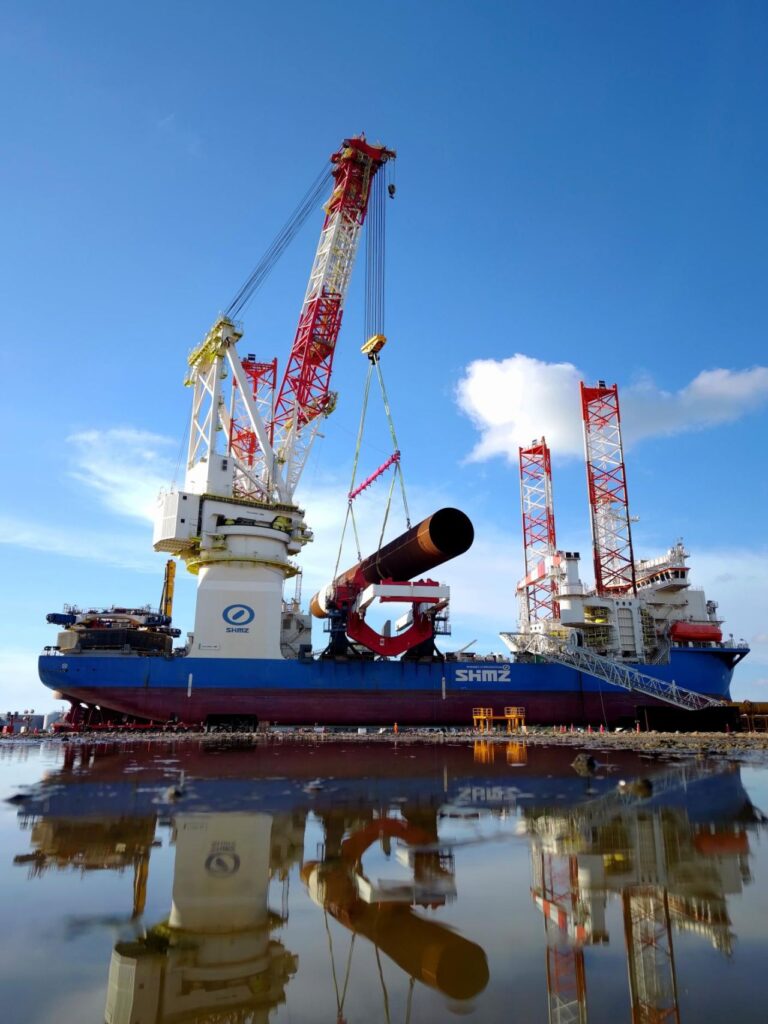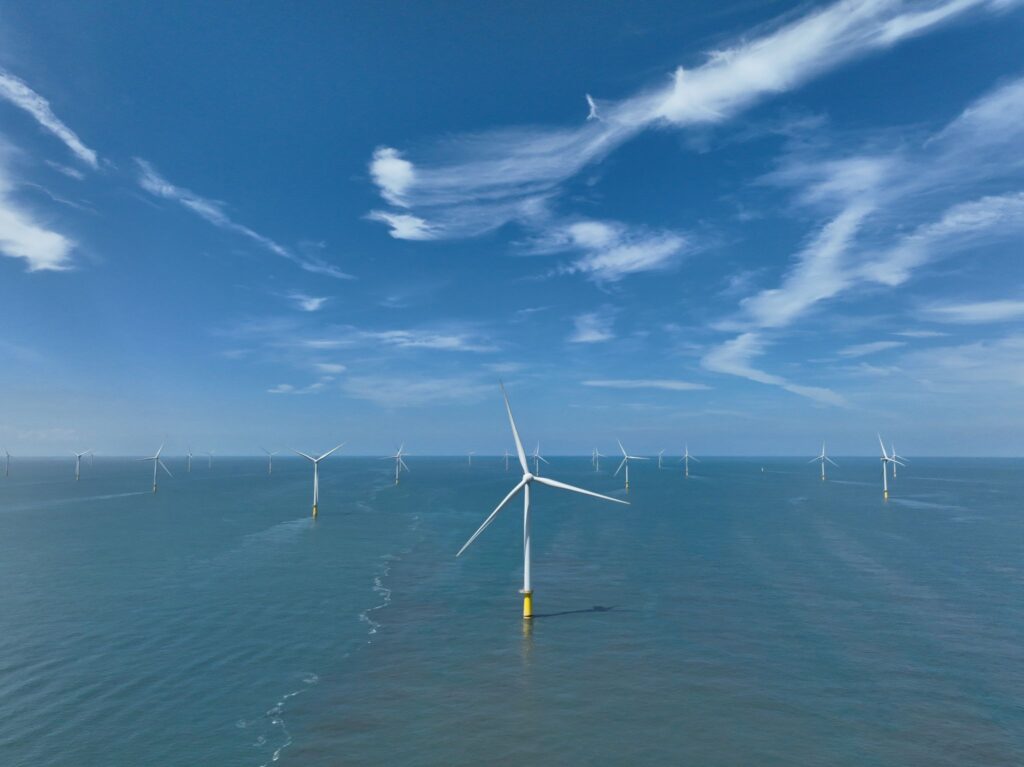All 80 monopiles have been installed at the Yunlin offshore wind farm in Taiwan, with 55 wind turbines set up by the installation teams and more than half connected to the grid.
The initial monopile installation was handled by Sapura Energy Berhad, which completed 15 monopiles in 2020 and 2021. In February 2022, Sapura Energy issued a contract termination notice to the Yunneng Wind Power consortium, citing unresolved technical and operational issues.
After Sapura’s exit, the Abu Dhabi-based National Petroleum Construction Company (NPCC) took over the monopile installation. Around the same time, Yunneng hired Havfram for Project Management and Owners Engineer Services for the foundation installation package. Havfram began their role in 2022.
Since 2022, NMDC Energy, formerly NPCC, handled the monopile installation. Fred. Olsen Windcarrier (FOWIC) and Shimizu are collaborating for the transportation and installation of monopile foundations in 2024.

The wind turbine installation vessel (WTIV) Blue Wind, under contract with FOWIC, is engaged as the installation vessel for both monopiles and wind turbines, along with NMDC Energy’s DLS-4200 and Seajacks Zaratan.
The first monopile in the 2024 installation campaign was installed in March. Last month, Jumbo Offshore completed the removal of two monopiles that were subject to pile runs during an earlier construction phase. The third affected monopile was removed last year.
The project team has installed all 80 monopiles, 72 transition pieces, 55 out of 80 Siemens Gamesa 8 MW wind turbines, 42 inter-array cables, and all twelve export cables.
Skyborn Renewables announced on social media that 42 of the wind turbines are connected to the grid, providing an energized capacity of 336 MW, making it Taiwan’s fourth-largest completed offshore wind farm.
“The project team will continue to work closely with all partners to steadily advance the finalization of the OWF, which is on track to complete the installation of 80 WTGs by the end of 2024,” said Skyborn Renewables.
Once completed, the 640 MW Yunlin wind farm is expected to power over 600,000 Taiwanese households. Located in the Taiwan Strait, the project has already contributed over 1.4 TWh of renewable energy to the grid, according to Skyborn Renewables.
The project company owning Yunneng Wind Power Co., Ltd. includes Skyborn Renewables (approx. 32%), TotalEnergies Renewables (approx. 29.5%), EGCO (approx. 26.5%), and Sojitz (approx. 12%).
Original Story at www.offshorewind.biz
